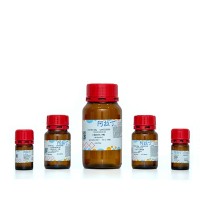An Improved Restriction Enzyme Accessibility Assay for Analyzing Changes in Chromatin Structure in Samples of Limited Cell Number
互联网
互联网
相关产品推荐

Hemagglutinin/HA重组蛋白|Recombinant H1N1 (A/California/04/2009) HA-specific B cell probe (His Tag)
¥2570

N8125050珀金埃尔默理化分析仪用检测器Improved SimulScan Dual-Stage Detector PerkinElmer
¥53724

氢氧化铝悬浮液,for Chloride Determination in Highly Colored Samples,阿拉丁
¥102.90

SARS-CoV-2 (2019-nCoV) Nucleocapsid/N Antibody Titer Assay Kit | SARS-CoV-2 (2019-nCoV) Nucleocapsid/N Antibody Titer Assay Kit
¥5000

ATF7IP2/ATF7IP2蛋白Recombinant Human Activating transcription factor 7-interacting protein 2 (ATF7IP2)重组蛋白ATF7-interacting protein 2;MBD1-containing chromatin-associated factor 2蛋白
¥2328
相关问答

